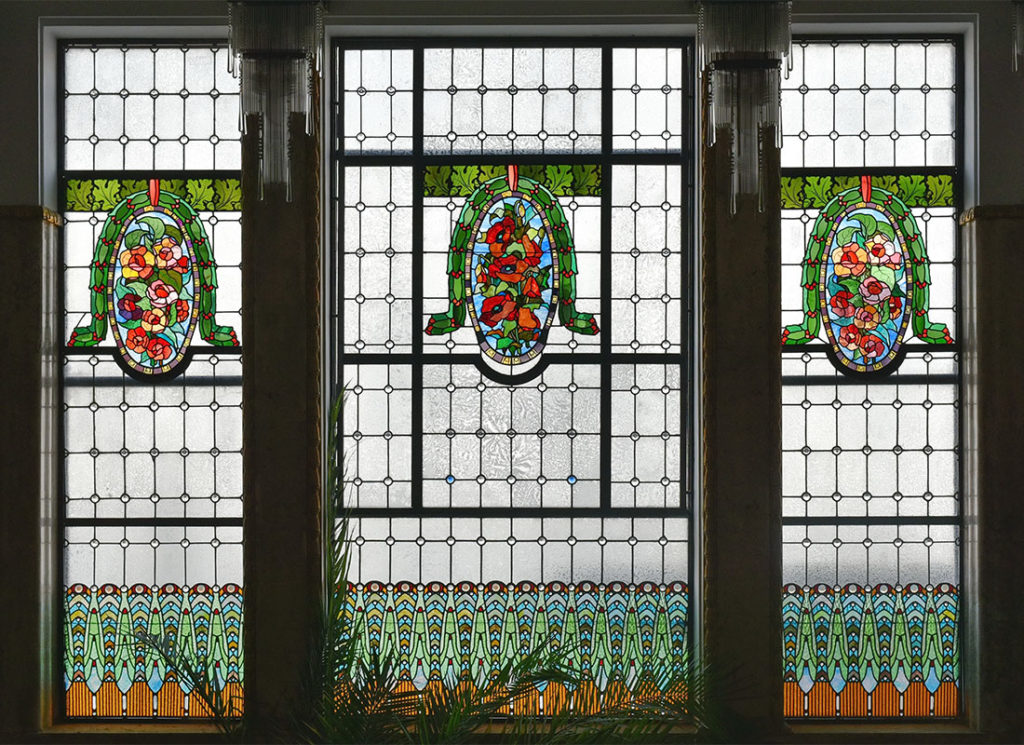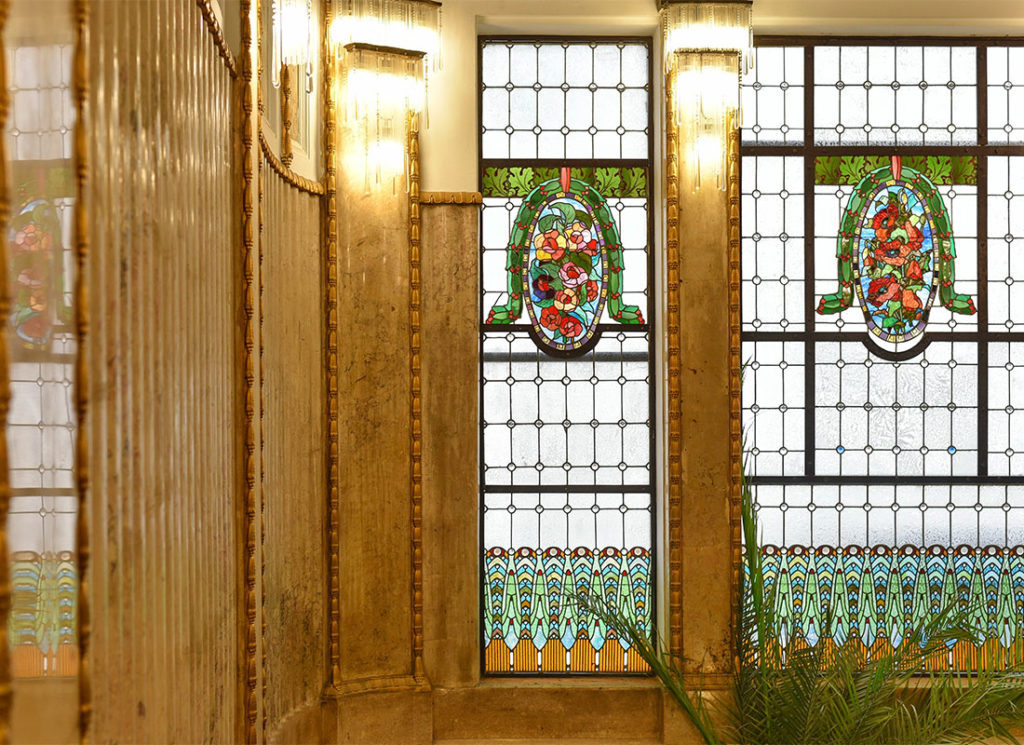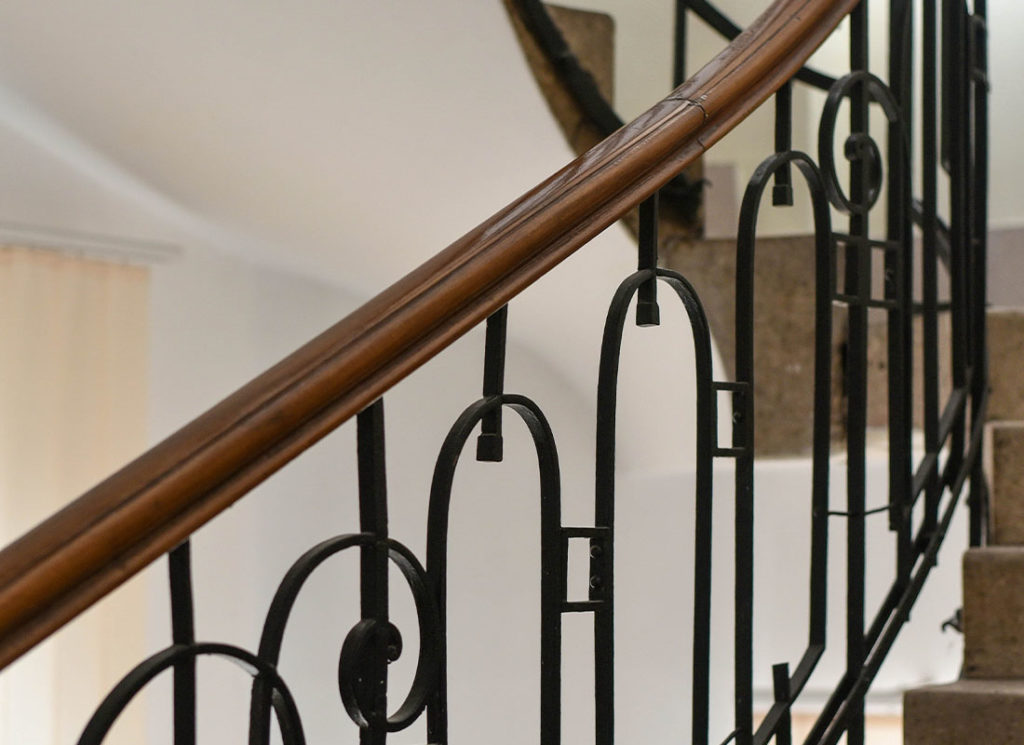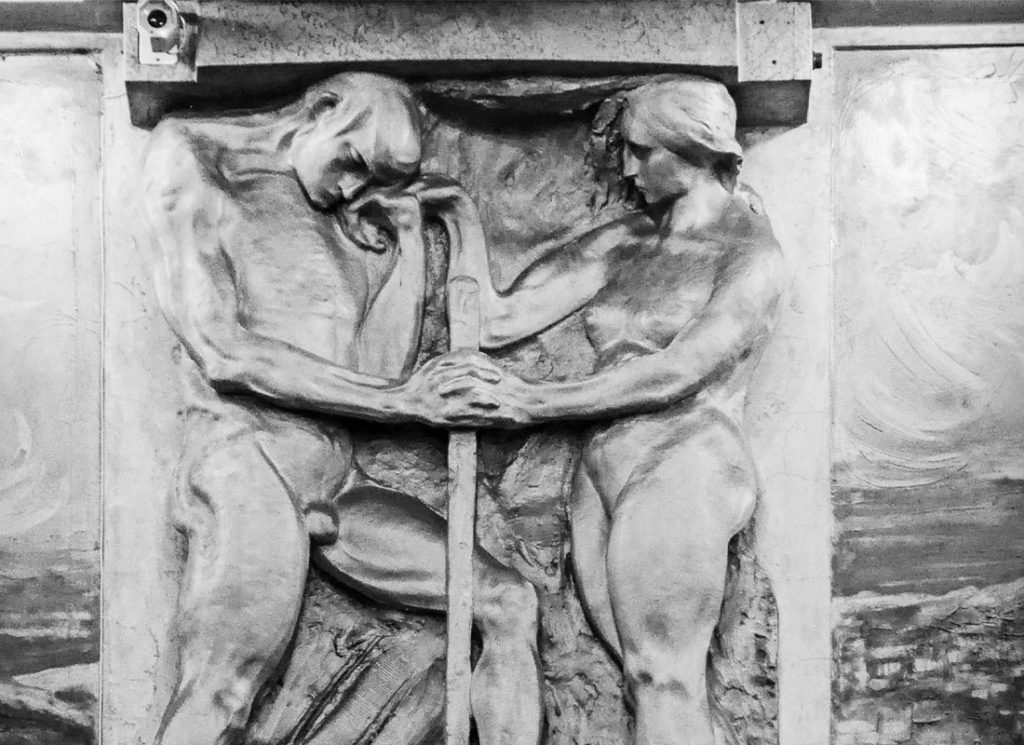From Lokalna Istoriya – written by Tetiana Kazantseva with photographs by Yuliya Korytska-Holub, original in Ukrainian
Today Shevchenko Avenue in Lviv is very impressive with its luxurious residential and public buildings and cobblestone road along which runs a green promenade. Back in the eighteenth century, this is where the Poltva flowed, the stormy and full-flowing river that continuously flooded and then dried up, posing a public health risk with its vapor. Bridges crossed the river, along the banks were huts of furriers, and in the place of today’s imposing George Hotel was a lock regulating the amount of water entering the moat around the city. It was a different, unusual for us Lviv!
Everything changes with the granting of autonomy to Lviv, the city flourishes as the true capital of Galicia and Lodomeria. At the turn of the twentieth century, the Poltva is immersed in a collector, and Shevchenko Avenue (then Akademicka Street) becomes a real architectural exhibition.

A New Phase
The Chamber of Commerce and Industry in Lviv existed since 1850 and was originally housed in the Rococo Biesiadecki Palace. In the early twentieth century, a decision was made to construct a new building that would demonstrate the beauty and luxury of Lviv at that time. Prominent architects, Alfred Zachariewicz — who was also one of the most influential members of the Chamber — and Tadeusz Obmiński — the creator of the facade of the Lviv Secession — were invited for the project. Both of these men had previously successfully collaborated with Ivan Levynskyi’s architectural firm. For this project, they worked independently for the first time, while Ivan Levynskyi was invited only to execute some construction work.
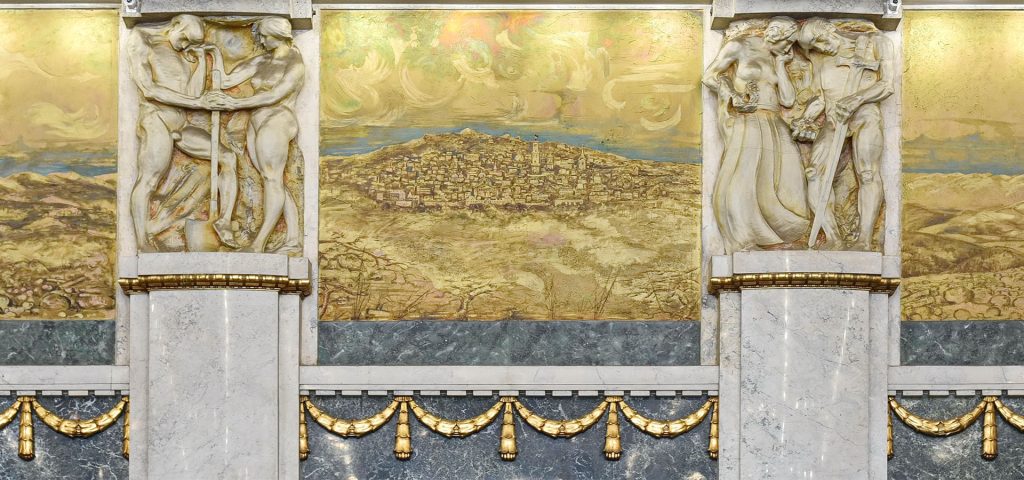
The building of the Chamber of Commerce and Industry was built in conjunction with the Institute of Technology, the entrance to which was from 5 Nyzhankivskoho Street. These buildings, although built at the same time and united by a common function, have somewhat different architects and stylistics. Tadeusz Obmiński’s authorship is absolute for the Institute of Technology, which was also entirely built by Ivan Levynskyi’s firm. On the other hand, in the Chamber of Commerce and Industry, Obmiński’s mark is not so easily traced, we do not have exact information about what kind of work he did there, but it is obvious that the ensemble of the complex was respected precisely because of this co-authorship. In particular, the rear facades of the buildings, united by large common courtyards, are executed in the style of Tadeusz Obmiński.
A new phase in Lviv architecture began with the Chamber of Commerce and Industry. First of all, it marked the end of ornamental Secession with its maiden mascarons, floral ornamentation, and lyricism. Here Alfred Zachariewicz launches a new style for Lviv, which is very modern and at the same time connected with previous traditions through stylization. We can classify this style as Late or Rational Secession, when a modern interpretation of historical architectural forms prevails.
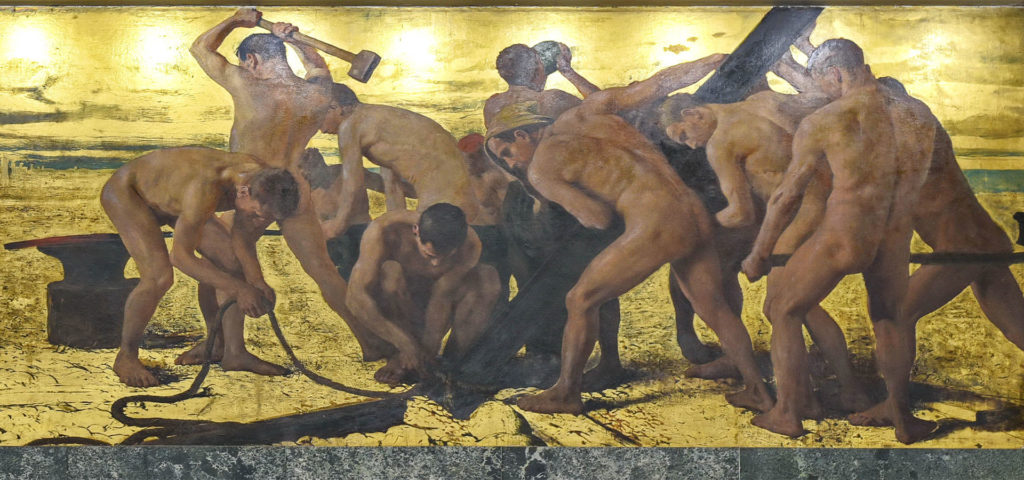
Competition between Father and Son
Very important for understanding the stylistics of this building is Alfred Zachariewicz’s creative competition with the buildings of his no-less brilliant father. Having created the Polytechnic and the Galician Savings Bank, Julian Zachariewicz laid the foundations of contemporary stylistics in Lviv architecture. His buildings have become exemplary and many architects have tried to at least equal or surpass them. Julian Zachariewicz died prematurely in 1898 and his death marked the end of Historicism in Lviv. If he had lived longer, the Lviv Secession would certainly have had another face. Here we can make an analogy with his peer Otto Wagner, who lived a very long and productive life, first building in Vienna Neo-Renaissance structures and then creating with his students the new Vienna Secession. But Julian Zachariewicz’s fate was different. After the death of his father, young Alfred Zachariewicz was the first to work with Secession in Lviv. When building Secession houses and the Mikolasch Passage (together with Ivan Levynskyi), Alfred, above all, was interested in the novelty of the style, the beauty and strength of reinforced concrete. He had always been an innovator, and the Chamber of Commerce emerged as a model of very new architecture that had not existed before in Lviv.
Nevertheless, the Polytechnic, created by Zachariewicz senior, did not let itself be forgotten. As a result, the son’s Chamber of Commerce is a kind of replica, a desire to catch up and surpass. Even the creative method used by Alfred was similar. He not only engaged in architectural and spatial design, but also in the design of the decor, in this case stained glass. This is in line with the spirit of the Arts & Crafts Movement, popular in the second half of the nineteenth century, which sought to close the gap between arts and craft. Just as Zachariewicz senior used to make full-scale drawings for stained-glass windows and murals for his buildings, Zachariewicz junior also made drawings for the stained-glass windows for the staircase and the assembly hall, leaving his signature on the work. Just as Michelangelo wrote “Michelangelo Buonarroti, Florentine, made this,” so does Alfred Zachariewicz proudly certify his authorship on each of his stained-glass windows.
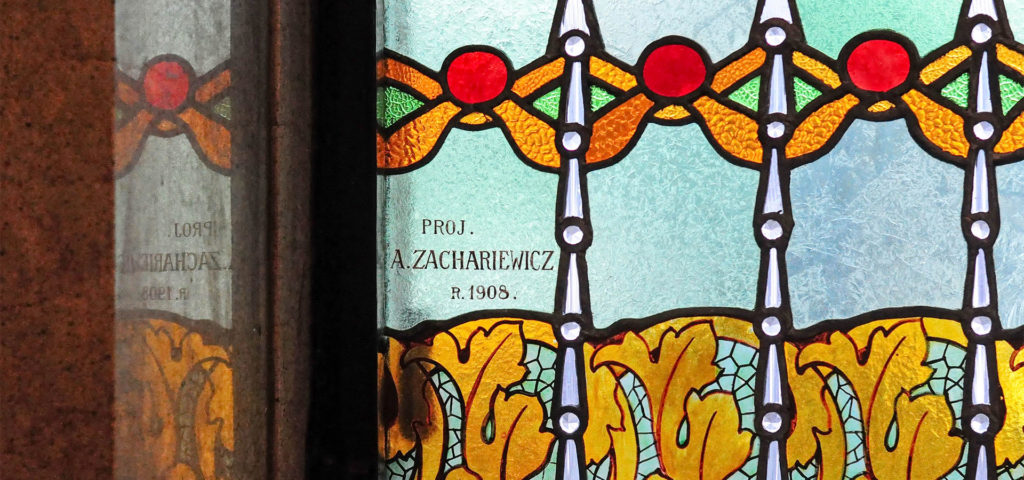
Stained-Glass Windows and Mosaics
But let’s go back to the building itself. Just like in the Polytechnic, the composition unfolds here gradually. From the classical facade with pilasters, the visitor enters the lobby and stairwell, which are decorated with extraordinary elegance and splendor, using forms and means new for Lviv – mosaics, wavy planes of walls, stained-glass windows, marble floors, and crystal candelabrum, also designed by Alfred Zachariewicz. The contrast of the exquisite rectangular outlines of the enclosure of the staircase and the colorful and lyrical mosaic compositions are very attractive and stylish. They depict simple house and garden plants – primrose, nasturtium, fuchsia, irises, and apple blossom. This is where the New Style appears – the choice of native plants and the technique of mosaic, which is an art created manually. Each mosaic panel is something different, slightly different in composition and assortment of colored stones, and corresponds to the thesis of Secession regarding the uniqueness of each work of art. These mosaics were created by Krakow artist Karol Frycz, a man with a very broad artistic background who studied at six prominent art institutions in Europe, including the Académie Julian in Paris and the William Morris School in London, a student of such distinguished artists as Stanislaw Wyspiański and Józef Mehoffer. Karol Frycz mostly worked as a set designer, especially for the Zielony Balonik Cabaret, but occasionally created works of monumental art.
Alfred Zachariewicz was not the only creator of the stained-glass windows in the Chamber of Commerce and Industry. There was also a stained-glass window above the entrance to the building where a sailboat conquers the stormy sea waves (unfortunately, the central part of this window is lost). Clearly, this was supposed to symbolize the purpose of the building, which was associated with trade, commerce, overcoming obstacles, and risk. This stained-glass window, like those of the Trading Hall on the ground floor, was made by Henryk Uziembło, who was the artistic director of the Stanisław Gabriel Żeleński stained glass and mosaics workshop. It was at this workshop that all the mosaics and stained-glass of the building were made and, evidently, it was the first large factory order for a Lviv building. It is known that Żeleński’s factory was established in Krakow in 1907 on the basis of the stained-glass workshop of Władysław Ekielski and Antoni Tuch, who made many stained-glass windows for Lviv, including the stained glass for the new part of the Armenian church. From 1910, it was the Żeleński factory that became the main producer of stained glass in Lviv, receiving very prestigious orders both before the First World War and during the interwar period.
It is very interesting how Henryk Uziembło, while directly connected to the factory, still shared the creation of the stained-glass windows between himself and Alfred Zachariewicz. This distribution certainly gave the interior an original look, as the creative signature of these artists was surely different. Henryk Uziembło thought like a painter and his stained glass acquired an independent sound, like a marvelous painting that could adorn any space. Alfred Zachariewicz, as an architect, created geometrically balanced compositions with a clearly defined center and predictable rhythm. It is especially interesting to see how the same motif of the sea waves, executed by different artists, looks completely different. Uziembło sees this as expressive colored spots with crystal droplets of different sizes and shapes, while Zachariewicz sees it as metric wavy planes with uniformly inserted identical crystals. These characteristic crystals were first introduced into Lviv architecture by his father in the stained-glass windows of the Galician Savings Bank. The tiny lenses work as light storage devices, filling the space with colorful rainbow rays.
Alfred Zachariewicz’s stained-glass windows formulate the principle by which we continue to recognize the stained glass of Żeleński’s factory. This is the division of the stained-glass window into colored and transparent parts. The colored part is the frame along with the central element (most often a flowerpot in an oval), while the area around it is made from colorless but textured glass. Such a composition was very fitting for the staircase of the Chamber of Commerce, because the regulated colored light from the stained glass did not interfere with the no less colorful mosaic inserts.
Everything is not straightforward with the many mosaics of the building and their authors. First of all, it should be noted that mosaic was a very expensive and special polychrome technique in Lviv, which is why only a few examples can be found. Thus, the main facade of the Chamber of Commerce and Industry is decorated with magnificent compositions by the same Henryk Uziembło. They are even in discord with a somewhat harsh classicist facade, but at the same time show the viewer that the Secession period is still enduring. The façade is crowned in the center by a beautiful coat of arms of the royal city of Lviv with the attributes of industry and commerce, made in a completely classical heraldic manner, but set on an unusual Secessionist background with peacock feathers. On both sides, the Secession theme is supported by friezes with a floral theme, dominated by blue and purple on a golden background. It is not clear why the staircase mosaics were entrusted to Karol Frycz rather than Uziembło. Maybe the latter was too involved in the works of the factory, or maybe they wanted to involve as many prominent artists as possible in the decoration of the building. This tendency was characteristic of Beaux-Arts architecture, which took off in Lviv with Julian Zachariewicz’s Polytechnic, received its highest development in the Opera House in Lviv, and later continued to be used in public buildings of Lviv.
Balk’s Puzzle
Let’s return to the interior of the building. How its composition skillfully develops, from the gradual unfolding of the intensity of the stairwell, the emphasis in the hall of the Trading Exchange, and the highest culmination in the assembly hall of the second floor. There, for the realization of his ideas, Alfred Zachariewicz invites two more distinguished artists – Zygmunt Kurczyński and Feliks Wygrzywalski, with whom he collaborated more than once in Lviv. Zygmunt Kurczyński is a Lvivian, as is Alfred, his regular partner and colleague. The expressive sculptures of this “disciple of Rodin,” as Zygmunt Kurczyński was often called, successfully complemented the harmonious and noble, but somewhat dry forms of Alfred’s buildings. Feliks Wygrzywalski, a native of Przemyśl, was actively contributing to Lviv architecture since 1908. Before that, he traveled the world, perfecting himself in Italy and Egypt, and then bringing us his sun-filled palette.
Thus Alfred Zachariewicz, similarly again in the assembly hall of the Polytechnic, wanted to embody an entire symbolic cycle on the walls of the hall, which would demonstrate the progress and most important moments of a person’s life. Here Wygrzywalski’s canvases with academic, even Renaissance monumental depictions of the nude body alter with Kurczyński’s sculptural compositions, which seem to grow out of the space of the wall thanks to the reception of “non-finito” (incompleteness). On one wall, Feliks Wygrzywalski presented the prerequisites for success “Strength” (“Battle with Centaur,”) “Work,” and “Endurance” (“Sisyphus,”), and on the other, the outcomes a person receives “Silver” (“Variable Capital,”) “Fortune,” and “Gold” (“Permanent Capital”). These material developments and achievements, embodied in paintings, are delimited with sculptures of Kurczyński, representing absolute concepts and values that are inextricably linked to our lives – “Love,” “Death” (or “Time,”) “Work,” “Rest,” “Melancholy,” “Peace” (or “Art and Military Duty”).
Throughout this cycle, there is a mystery yet to be solved that is very intriguing and has many hypotheses. Zygmunt Kurczyński worked with an assistant, Zygmunt Balk, a prominent Jewish painter who, like many others, died in the ghetto in 1942. We do not know exactly what Zygmunt Balk did in the Chamber of Commerce…. Was it the details on Wygrzywalski’s canvases, or perhaps the landscapes because Balk was a set designer, or maybe he was given free will and was the author of three canvases over the entrance, the “urban landscapes,” as they were described. The most interesting thing is that we do not know what was originally there, because we see there a modern panorama of Lviv, created in the Soviet era, which is markedly different in color, technique, and composition. So what was there? I assume that they were urban landscapes, but not of Lviv. What exactly could have been redrawn in the Soviet period, despite the high value of the painting, obviously due to its ideological inadmissibility? Suppose it was a panorama of Jerusalem, this dreamy city on the Holy Land that everyone wanted to reach. After all, this painting and sculptural philosophical cycle lacks precisely the sacral component. Let us recall once again the cycle of Jan Matejko at the Polytechnic – because there the human suffering and scientific and technical achievements are balanced by the Virgin Mary, located in the center of the composition.
***
In one article it is impossible to embrace this universe, which is the Chamber of Commerce in Lviv and its creators. Here we focus primarily on artistic questions, whereas the technical equipment (i.e., building materials, lighting, heating, ventilation, water supply, sewage, and pneumatic mail) deserve to be part of a separate article.
Raw facts and even an emotional description cannot offer as much as an in-person visit to this building. Because architecture is first and foremost a space that must be physically experienced in order to be understood and appreciated. We express our deep gratitude to the Chief Prosecutor of the Lviv region, Iryna Didenko, as well as to the press secretary Yulia Shevchenko, to the prosecutors Yulianna Kovaliv and Vasyl Spichak for the opportunity to conduct excursions to this landmark. It created an unforgettable experience for the participants of the excursion, allowing them to get a deeper understanding of Lviv architecture and for us to write this article.
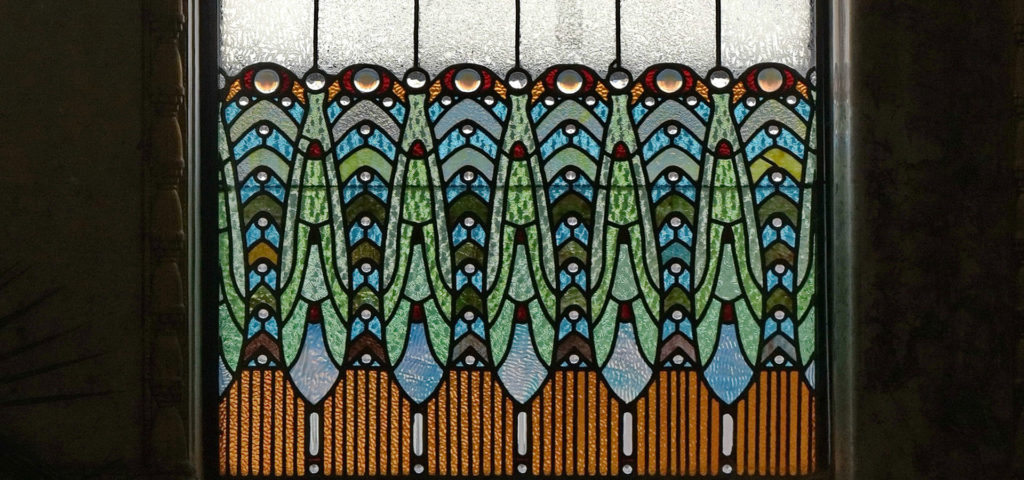
Author: Tetiana Kazantseva
Photographs: Yuliya Korytska-Holub
Translated by: Areta Kovalska
Ukrainian version published on Lokalna Istoryia on April 22, 2020
Lokalna Istoriya (Local History) is a Ukrainian-language multimedia online platform about the past and present of Ukraine





